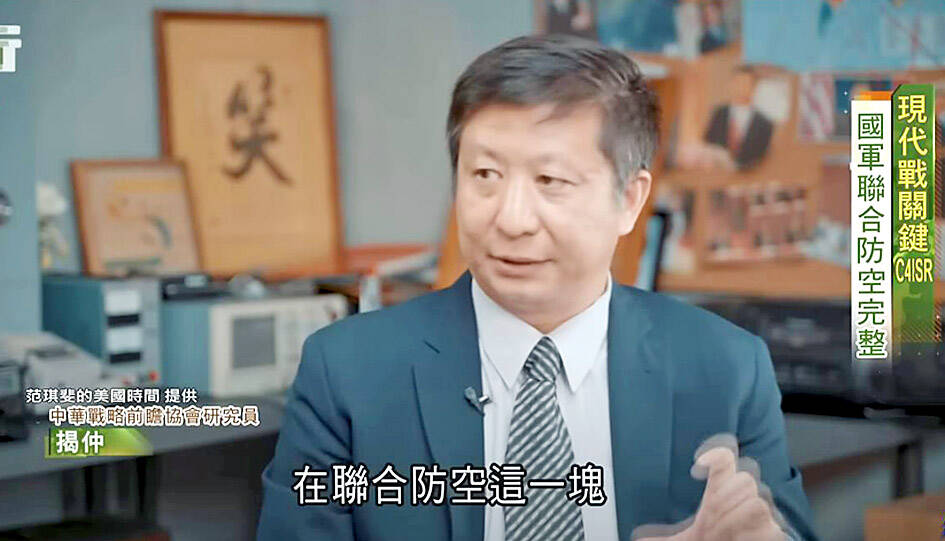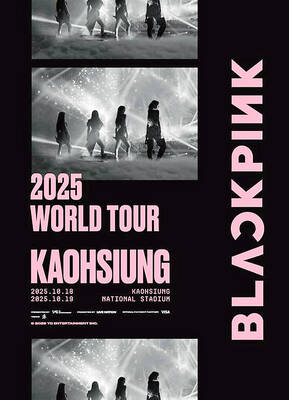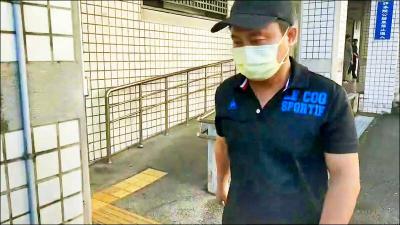China is preparing an armada of ferries and civilian vessels to invade Taiwan, foreign experts warned, but a Taiwanese defense expert said that the nation has contingencies to handle the threat.
The Daily Telegraph on Sunday quoted experts as saying that the Chinese People’s Liberation Army (PLA) lacks the number of amphibious landing craft needed to launch a full-scale invasion of Taiwan, but it could bridge the gap with civilian vessels, including “gigantic roll-on, roll-off ferries that can each carry hundreds of armored vehicles.”
China’s civilian vessels could “dramatically increase the tonnage of military material that can be moved by its existing military amphibious assault craft,” Tom Shugart, an analyst at the Center for a New American Security, told the newspaper.

Photo: Screengrab from YouTube
That could give it “capacity to transport about 300,000 troops and their vehicles across the Taiwan Strait in about 10 days,” Shugart said.
Chieh Chung (揭仲), a researcher at the Taipei-based Association of Strategic Foresight, agreed that the PLA lacks military vessels to transport enough assets in a hypothetical invasion and has regularly involved large roll-on, roll-off (ro-ro) ferries in military exercises over the past four years.
Each 36,000 tonne ro-ro vessel is estimated to be able to transport four PLA combined arms battalions, meaning that two could transport a brigade, which generally involves thousands of soldiers, Chieh said.
However, despite their capacity, the civilian vessels are not designed to transport military assets such as landing vessels and rely on docking facilities, he said.
In the event of an invasion of Taiwan, the first wave of PLA troops would exclusively use military landing craft, helicopters and transport aircraft, he said.
Only after the first wave of troops has successfully landed in Taiwan and constructed unloading facilities could civilian vessels start transporting more troops to Taiwan, Chieh said.
Even if that were to happen, Taiwan’s long-range anti-ship missile systems, naval mines and suicide speedboats would be sufficient to destroy the relatively slow-moving civilian ships, he said.
The Ministry of National Defense said it closely monitors Chinese activities around Taiwan including military-civilian coordinated landing exercises.

South Korean K-pop girl group Blackpink are to make Kaohsiung the first stop on their Asia tour when they perform at Kaohsiung National Stadium on Oct. 18 and 19, the event organizer said yesterday. The upcoming performances will also make Blackpink the first girl group ever to perform twice at the stadium. It will be the group’s third visit to Taiwan to stage a concert. The last time Blackpink held a concert in the city was in March 2023. Their first concert in Taiwan was on March 3, 2019, at NTSU Arena (Linkou Arena). The group’s 2022-2023 “Born Pink” tour set a

CPBL players, cheerleaders and officials pose at a news conference in Taipei yesterday announcing the upcoming All-Star Game. This year’s CPBL All-Star Weekend is to be held at the Taipei Dome on July 19 and 20.

The Taiwan High Court yesterday upheld a lower court’s decision that ruled in favor of former president Tsai Ing-wen (蔡英文) regarding the legitimacy of her doctoral degree. The issue surrounding Tsai’s academic credentials was raised by former political talk show host Dennis Peng (彭文正) in a Facebook post in June 2019, when Tsai was seeking re-election. Peng has repeatedly accused Tsai of never completing her doctoral dissertation to get a doctoral degree in law from the London School of Economics and Political Science (LSE) in 1984. He subsequently filed a declaratory action charging that

The Hualien Branch of the High Court today sentenced the main suspect in the 2021 fatal derailment of the Taroko Express to 12 years and six months in jail in the second trial of the suspect for his role in Taiwan’s deadliest train crash. Lee Yi-hsiang (李義祥), the driver of a crane truck that fell onto the tracks and which the the Taiwan Railways Administration's (TRA) train crashed into in an accident that killed 49 people and injured 200, was sentenced to seven years and 10 months in the first trial by the Hualien District Court in 2022. Hoa Van Hao, a